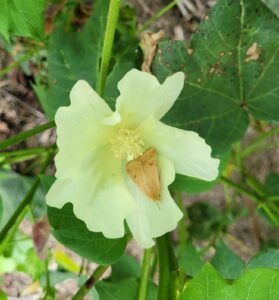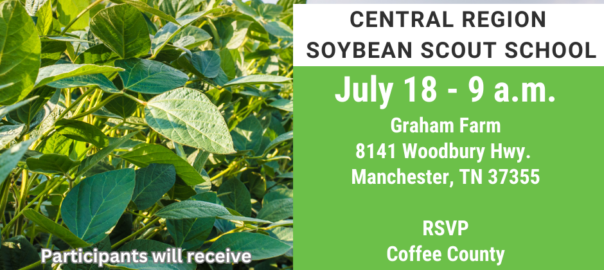| Location | CEW | TBW |
| Hardeman (Bolivar) | 6 | 0 |
| Fayette (Whiteville) | 29 | 0 |
| Fayette (Somerville) | 26 | 0 |
| Shelby (Millington) | 42 | 0 |
| Tipton (Covington) | 2 | 0 |
| Tipton (North) | 20 | 0 |
| Lauderdale (Golddust) | 35 | 0 |
| Haywood(West) | 8 | 1 |
| Haywood (Brownsville) | 67 | 0 |
| Madison (WTREC) | 41 | 1 |
| Madison (North) | 35 | 0 |
| Crockett (Alamo) | 1 | 1 |
| Crockett (Friendship) | 51 | 0 |
| Dyer (King Rd) | 48 | 1 |
| Dyer (Dyersburg) | 61 | 0 |
| Lake (Ridgely) | 35 | 2 |
| Gibson (Trenton) | 98 | 0 |
| Gibson (Milan Rec) | 4 | 0 |
| Carroll (Coleman Farm) | 15 | 2 |
All posts by Sebe Brown, IPM Extension Specialist
August 10 Bollworm/Budworm Catches for West TN
| Location | CEW | TBW |
| Hardeman (Bolivar) | 3 | 0 |
| Fayette (Whiteville) | 31 | 1 |
| Fayette (Somerville) | 12 | 0 |
| Shelby (Millington) | 36 | 0 |
| Tipton (Covington) | 4 | 0 |
| Tipton (North) | 15 | 0 |
| Lauderdale (Golddust) | 17 | 0 |
| Haywood(West) | 21 | 1 |
| Haywood (Brownsville) | 26 | 0 |
| Madison (WTREC) | 48 | 3 |
| Madison (North) | 18 | 0 |
| Crockett (Alamo) | 1 | 2 |
| Crockett (Friendship) | 27 | 0 |
| Dyer (King Rd) | 44 | 1 |
| Dyer (Dyersburg) | 45 | 1 |
| Lake (Ridgely) | 20 | 2 |
| Gibson (Trenton) | – | – |
| Gibson (Milan Rec) | 2 | 5 |
| Carroll (Coleman Farm) | 20 | 0 |
Due to the excess rainfall we experienced over the past week, we weren’t able to reach our Trenton location. If moth numbers are exceedingly high, I’ll update the post and send out those numbers tomorrow.
August 3 Bollworm/Budworm Catches for West TN
| Location | CEW | TBW |
| Hardeman (Bolivar) | 4 | 0 |
| Fayette (Whiteville) | 26 | 0 |
| Fayette (Somerville) | 16 | 0 |
| Shelby (Millington) | 30 | 0 |
| Tipton (Covington) | 3 | 0 |
| Tipton (North) | 17 | 0 |
| Lauderdale (Golddust) | 18 | 0 |
| Haywood(West) | 22 | 1 |
| Haywood (Brownsville) | 31 | 3 |
| Madison (WTREC) | 14 | 0 |
| Madison (North) | 0 | 0 |
| Crockett (Alamo) | 0 | 2 |
| Crockett (Friendship) | 3 | 0 |
| Dyer (King Rd) | 6 | 1 |
| Dyer (Dyersburg) | 28 | 1 |
| Lake (Ridgely) | 9 | 3 |
| Gibson (Trenton) | 16 | 0 |
| Gibson (Milan Rec) | 0 | 0 |
| Carroll (Coleman Farm) | 5 | 0 |
August Insect Situation
I’ve received several calls over the past few days about large numbers of immature plant bugs being found 7-10 days after insecticide applications. Corn is quickly drying down, pigweed and other wild hosts have flowered and cotton is at peak bloom in several areas. This makes cotton an ideal host for plant bugs and in some instances the only host. Our top tier products (Transform, Orthene, Diamond, Orthene + pyrethroid) are still controlling plant bugs well and are about the only options we have in August.
Diamond is an insect growth regulator (IGR) that’s primary activity is on plant bug nymphs. Generally speaking, smaller nymphs (1st-2nd) are easier to control with IGRs than larger nymphs. Fields with a high population of larger nymphs (3rd-5th) will see slower control ofplant bugs than fields with predominately small nymphs. Diamond’s efficacy isn’t usually apparent until 10-14 days post treatment. Checking behind Diamond 6 to 7 days post may not give you an accurate representation of what’s happening in your field. However, if nymph numbers, especially small nymphs, are increasing by day 10 retreatment may be justified. Getting the best control with Diamond requires knowing the size of your predominate plant bug nymphs are and a little luck on the timing. Also, Transform and Diamond don’t have activity on stink bugs, the addition of a pyrethoid or organophosphate to oversprays will take care of stink bugs in cotton
A quick note on Orthene, its well known that Orthene’s rainfastness is slow and if you can, give it a full 24 hours. I’ve seen my best control with Orthene when we have 48 hours of no rainfall behind an application. Adjuvants may help decrease the time required to be rainfast somewhat but there’s no substitution for a day of dry weather behind an application.

Bollworm egg lay is picking up in a few places around West TN. So far, I haven’t heard of any failures in 3-gene cotton in Tennessee or the Midsouth. It is highly unlikely you will have to spray for worms in any of our triple gene varieties. Our monitoring efforts of Bt corn, which can help forecast issues in cotton, have shown no survivorship in VIP corn. Double Pro varieties, which are equivalent to BG2, are heavily infested with worms and any BG2 cotton should be scouted closely and applications made on our 20% egg threshold.
Soybeans for the most part have been very quiet for much of the growing season. Recently, I noticed a large increase in kudzu bugs and stink bugs infesting soybeans, this is to be expected since we’re reaching the later part of summer. Also, with much of our corn acres reaching dent or past, I would expect to see a decent surge in stink bug numbers as we continue into August. Pyrethroids are good options for almost every pest we face in beans late season. Lingering populations of resistant brown stink bugs may require a premix insecticide (Endigo, Leverage, etc) or the addition of a 0.5 lb of orthene with your pyrethroid.
Fall Armyworms Appearing in Tennessee
Over the past couple days, I’ve gotten a few reports of fall armyworms in pastures on the Mississippi/Alabama border with Tennessee. Tennessee will still have armyworms that migrate North and infest pastures, food plots and the occasional yard every year. However, the wormageddon that happened in 2021 was a very unique event and will not occur yearly.

Fall armyworms don’t overwinter in Tennessee and populations migrate North from Texas and Florida every year. The difference in 2021 vs 2022-23 is the conditions that were occurring in April and May in South Texas. Texas experienced a warm and unseasonably wet spring that allowed for the proliferation of extremely large numbers of armyworms. Large numbers of moths plus ample food supply in pasture grasses, fallow grasses, yards and pretty much anywhere that had grass allowed this “army” to make its way North. Texas experienced outbreaks first followed by Louisiana, Arkansas, Mississippi then Tennessee with the moth flight culminating, in Canada, in November. I ask my colleagues, in Southern states, weekly if they are seeing any armyworms or anything resembling what happened in 2021 and the answer has consistently been no. My colleague, Dr. Nick Bateman, is getting calls about armyworms in rice but nothing even close to what was experienced in 2021.
If you do see armyworms it shouldn’t be automatically assumed that pyrethroids won’t be effective. We don’t fully understand why pyrethroids provided inconsistent control in 2021. Resistance is a possibility but overlapping generations causing mixing of various worm sizes resulting the appearance of poor control is another possibility. Also, since armyworms don’t overwinter in Tennessee and there is no evidence of reverse migration, the armyworms we experienced in 2021 won’t be the same ones we see in subsequent years. However, if pyrethroids do fail to control armyworms please contact your local county agent.
Going forward, pasture treatments should be considered when armyworm populations exceed 3 to 4 worms per square foot. If fields are ready or near ready for cutting, harvesting is suggested rather than applying an insecticide. Producers may watch for the presence of birds in a field as an indicator of armyworms. This method should not be the only one used to check for armyworms because this indication often is too late to avoid field injury. Early signs of infestations by small larvae cause plants to have a “window-paned” appearance. This is due to the larvae’s inability, at small sizes, to chew completely through the leaf blade leaving the upper epidermis intact. Large areas of window panning will give fields a frosted appearance. Ideally, scouting should be initiated in late July to early August without the presence of birds or frosted patches appearing so infestations can be caught early. When scouting during times when armyworms are not feeding (midday) be sure to dig through the thatch layer and check the base of plants. Detection of frass (insect excrement) is also a sign that armyworms may be present in a field.
Information on grazing restrictions, application rates and insecticide choice can be found below. https://extension.tennessee.edu/publications/Documents/PB1768.pdf
One final note to homeowners, don’t fall for armyworm preventative lawn treatments. Most lawn products that are utilized for fall armyworm outbreaks, especially foliar sprays, have limited residual efficacy and shouldn’t be applied if armyworms aren’t present. Insecticide residual, even in systemic products, grows out with your grass. If you mow your lawn on a regular basis the residual needed to control armyworms is mowed off and new growth may not be protected. Applying an insecticide for an insect that isn’t there or may never show up, isn’t IPM and is a waste of money. Your county agent is an excellent resource for information pertaining to armyworm control in home lawns and pastures and won’t try to sell you anything.
July 26 Bollworm/Budworm Catches for West TN
| Location | CEW | TBW |
| Hardeman (Bolivar) | 5 | 0 |
| Fayette (Whiteville) | 45 | 0 |
| Fayette (Somerville) | 2 | 0 |
| Shelby (Millington) | 22 | 0 |
| Tipton (Covington) | 3 | 0 |
| Tipton (North) | 26 | 0 |
| Lauderdale (Golddust) | 20 | 0 |
| Haywood(West) | 32 | 1 |
| Haywood (Brownsville) | 19 | 3 |
| Madison (WTREC) | 13 | 0 |
| Madison (North) | 0 | 0 |
| Crockett (Alamo) | 0 | 2 |
| Crockett (Friendship) | 14 | 0 |
| Dyer (King Rd) | 5 | 1 |
| Dyer (Dyersburg) | 34 | 1 |
| Lake (Ridgely) | 21 | 4 |
| Gibson (Trenton) | 26 | 0 |
| Gibson (Milan Rec) | 1 | 0 |
| Carroll (Coleman Farm) | 1 | 0 |
July 20 Bollworm/Budworm Catches for West TN
| Location | CEW | TBW |
| Hardeman (Bolivar) | 1 | 0 |
| Fayette (Whiteville) | 15 | 0 |
| Fayette (Somerville) | 18 | 0 |
| Shelby (Millington) | 21 | 0 |
| Tipton (Covington) | 2 | 0 |
| Tipton (North) | 19 | 0 |
| Lauderdale (Golddust) | 2 | 0 |
| Haywood(West) | 19 | 0 |
| Haywood (Brownsville) | 32 | 0 |
| Madison (WTREC) | 16 | 0 |
| Madison (North) | 0 | 0 |
| Crockett (Alamo) | 0 | 0 |
| Crockett (Friendship) | 6 | 0 |
| Dyer (King Rd) | 9 | 2 |
| Dyer (Dyersburg) | 46 | 0 |
| Lake (Ridgely) | 20 | 0 |
| Gibson (Trenton) | 0 | 0 |
| Gibson (Milan Rec) | 0 | 0 |
| Carroll (Coleman Farm) | 0 | 0 |

UT Soybean Scout Schools
UT’s Soybean Scout Schools will be held in July (see details below). These field-side programs cover the basics of soybean growth, scouting, pest identification, and general management. Three Pesticide recertification and CCA CEU points will be available. Scout Schools are offered free of charge with sponsorship from the Tennessee Soybean Promotion Board. Registration is not required. Participants will receive a scouting notebook and a sweep net while supplies last.
West TN – Madison County, July 17th, 9:00 AM – 11:30 AM. This school will be at the West TN Research and Education Center, 605 Airways Blvd. Jackson TN, 38301. Signs will be up at the station to direct you to the field.

Middle TN – Coffee County, July 18th, 9:00 AM – 11:30 AM. This school will be at Graham Farms,8141 Woodbury Hwy., Manchester, TN. Please contact Amy Willis Prince of the UT Coffee County Extension Office at 931-723-5141 or awillis2@utk.edu if you plan to attend.

East TN – Monroe County, July 19th, 9:00 AM – 11:30 AM. This school will be held at the Monroe County Farm Bureau Office 501 Main Street, Madisonville, TN 37354. Lunch will be provided. A head count is required for the meal, please contact Jonathan Rhea of the UT Monroe County Extension Office at 423-442-2433 or jrhea@utk.edu if you plan to attend.
